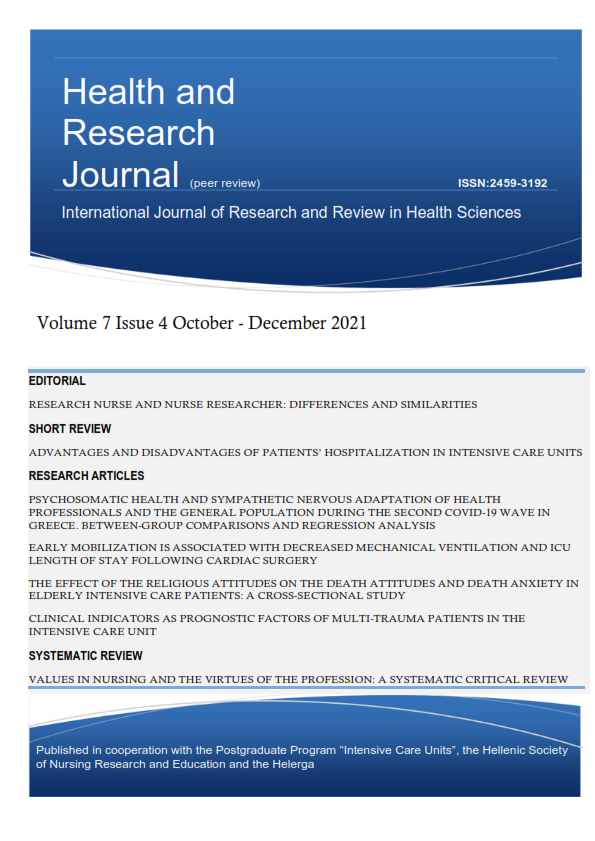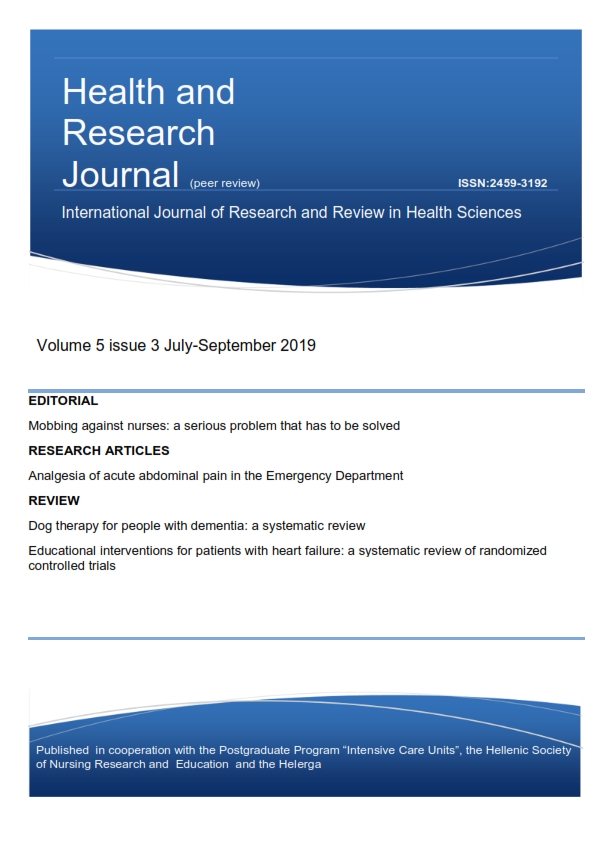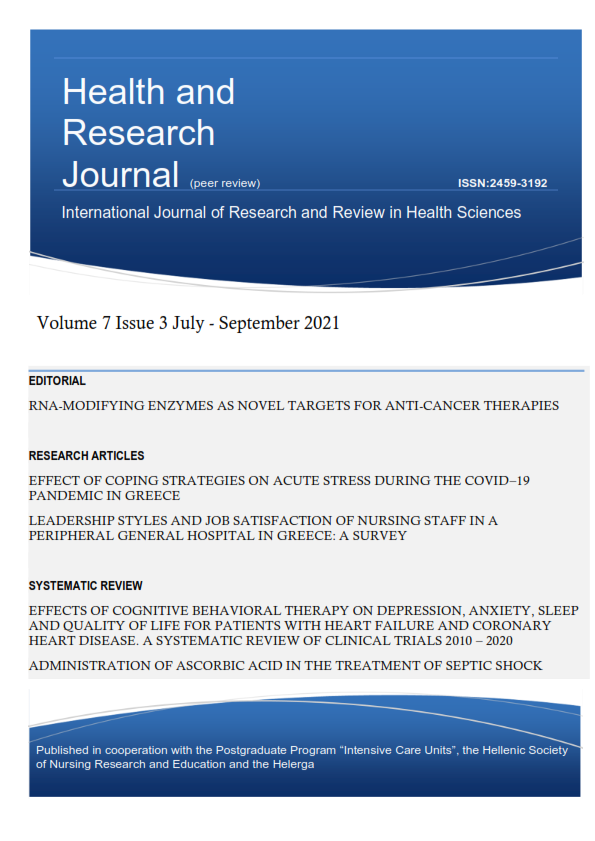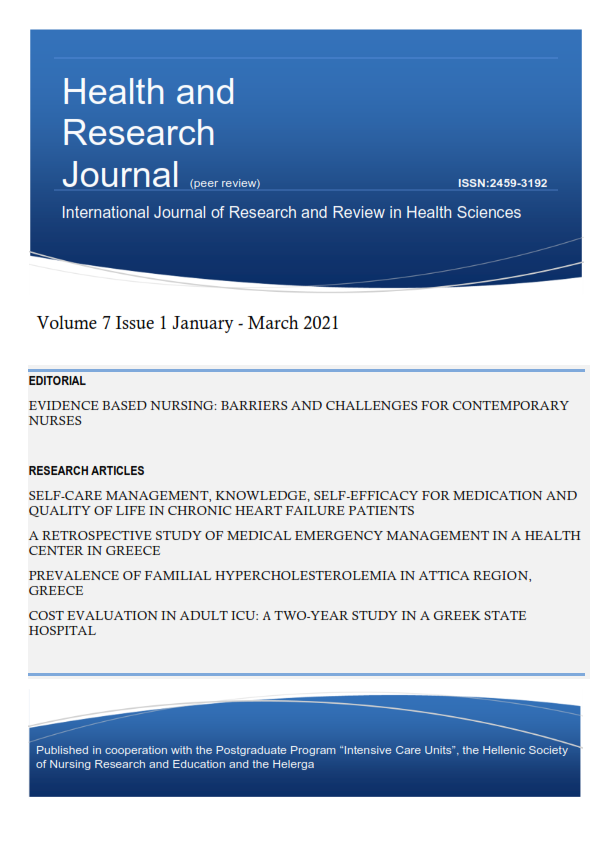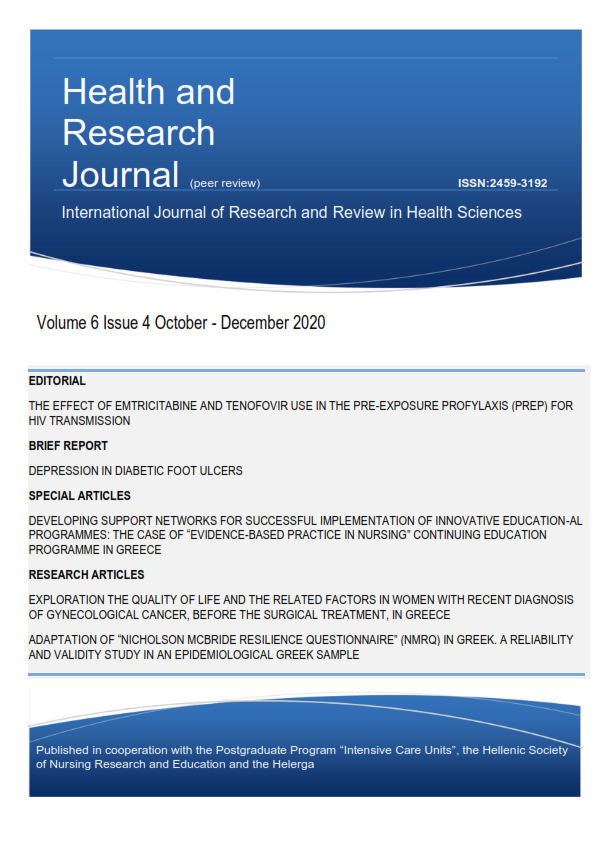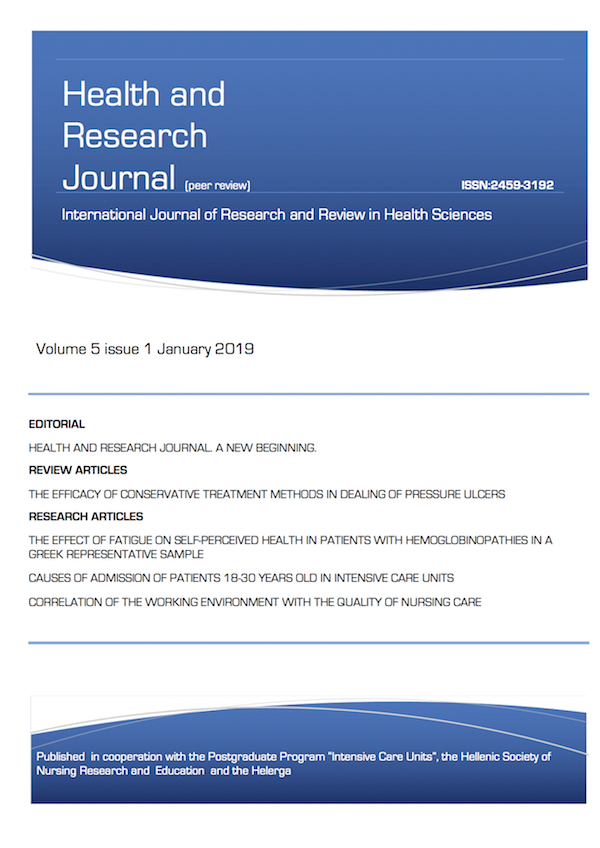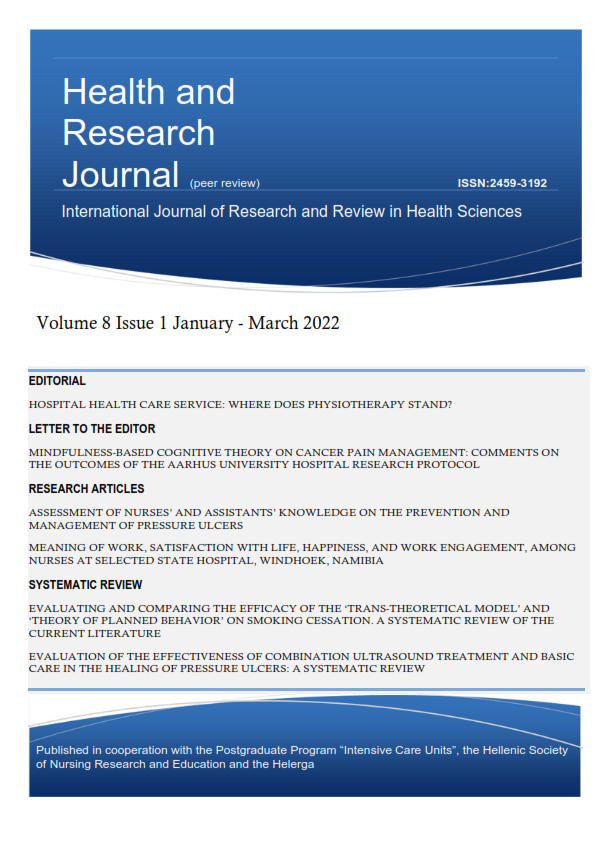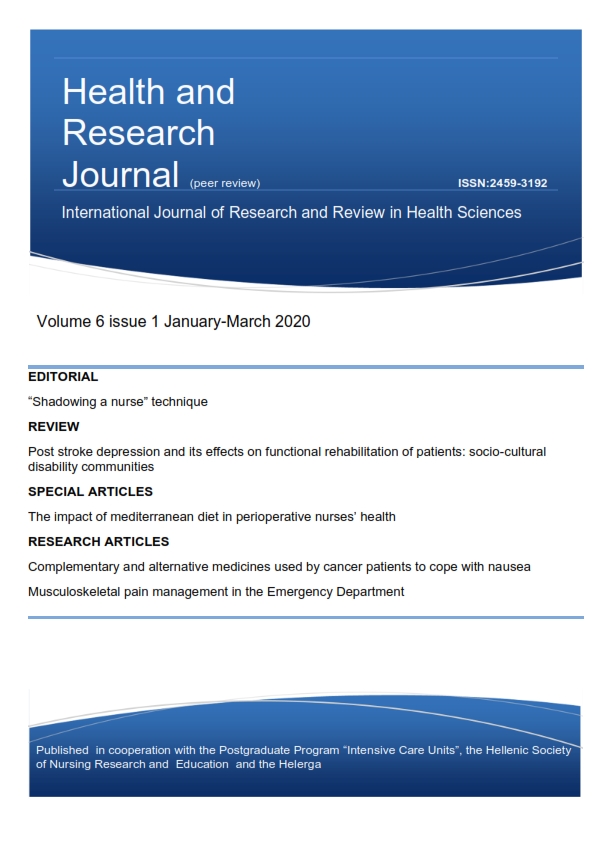Evaluation of the effectiveness of postoperative analgesia after major abdominal surgery
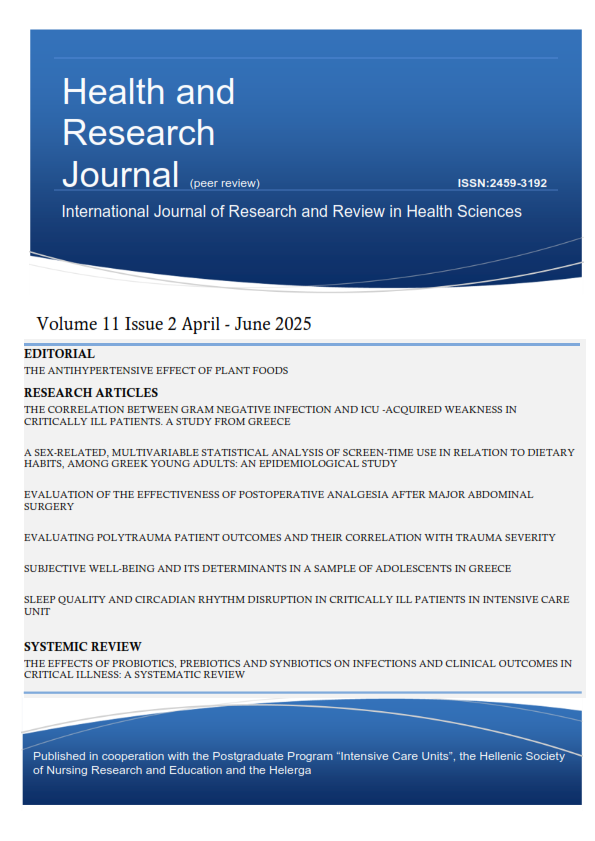
Abstract
Background: Postoperative pain (PP) relief improves patient comfort, facilitates recovery, reduce length of hospital stay (LOS) and chronic pain. The complexity of PP in major abdominal surgery (MAS) is an indication for the use of multimodal analgesia (MA).
Aim: To evaluate the effectiveness of different methods of postoperative analgesia in patients undergoing MAS.
Method and Mattwerial: A prospective, comparative observational study was conducted. The study population was all patients who underwent elective MAS between September 2019 and July 2023, in a general public hospital in Attica. Patients were divided into three groups based on analgesia: a) Group A: analgesia via an epidural catheter in the lumbar or thoracic region. b) Group B: analgesia with continuous wound infusion of anesthetic with an On-Q system c) Group C: iv analgesia. Patients of B and C groups also received patient controlled analgesic morphine (PCA). The effectiveness of analgesia was assessed at rest and cough by the numerical rate scale (NRS) and morphine consumption. In addition, blood pressure, oxygenation status, vomiting, recovery of bowel function and the LOS were recorded. The statistical program SPSS 26.0 was used for the analysis.
Results: The study sample consisted of 89 adult patients who underwent planned MAS and were allocated to the analgesia groups [Group A N=44(49.4%), Group B N=30(33.7%), Group C N=15 (16.9%)]. The mean age of the sample was 62.7 years (SD=17.8 years). The pain score in Group A was significantly higher compared to Group B throughout the follow-up period. Rest pain decreased over time in all three analgesia groups (p<0.001 for A, p<0.001 for B and p=0.001 for C). However, the degree of reduction differed significantly between the 3 groups, p=0.013. The mean systolic blood pressure was significantly higher on the 1st postoperative day in Group C compared to both Group A and Group B.
Conclusions: Continuous wound infusion analgesia with On-Q pump as a component of MA was more effective in the management of acute PP in patients with MAS than epidural and intravenous MA. It also reduces overall opioid consumption and can be a safe and effective alternative solution in the management of acute PP in patients with MAS.
Article Details
- How to Cite
-
Ntavoni , G., Vasilopoulos, G., Toylia , G., Linardatou, V., Kadda, O., Stergiannis, P., Myrianthefs, P., & Kalogianni , A. (2025). Evaluation of the effectiveness of postoperative analgesia after major abdominal surgery. Health & Research Journal, 11(2), 117–131. https://doi.org/10.12681/healthresj.39935
- Section
- Original Articles
Copyright notice:
The journal "Health and Research Journal" reserves the rights for copyright of the content of the website and also the copyright of the articles published.
By virtue of their appearance in this journal, the articles are free to be used for non-commercial purposes. However, the articles cannot and must not be used in anyway, published elsewhere or modified without any reference to the author and the first publication of the article.



